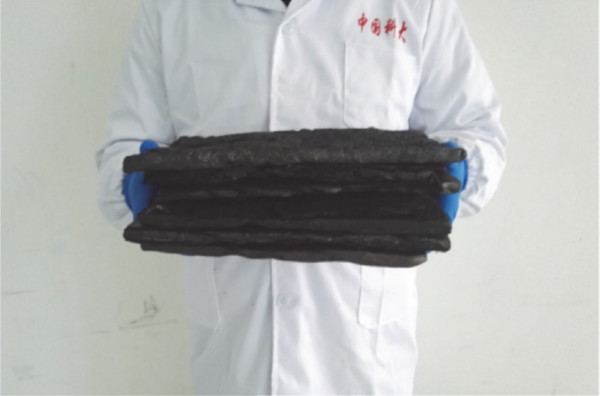Solid acid catalysts (SACs) have attracted continuous research interests in past years, as they play a pivotal role in establishing environmentally friendly catalytic processes for various chemical industries. Yet development of versatile SACs with low cost and high efficiency remains challenging so far.
Published on Research, a team led by Prof. YU Shuhong and LIANG Haiwei from the University of Science and Technology of China (USTC) reported a new type of carbon-based SACs, which is highly porous and made from natural bacterial cellulose (BC), as if they had the power of Midas to turn a stone into gold.

Solid Acid Catalysts (SACs) made from becterial cellulose (BC). (Image by YU Shuhong)
To transform BC into such carbon-based catalyst, researchers developed a method with two phases: incomplete carbonization and then sulfonation. BC aerogels were first carbonized at 400-800°C under a N2 atmosphere, and sulfonated with concentrated or fuming H2SO4 subsequently.
In addition, researchers revealed the detailed surface chemistry of the nanofibrous SACs. The prepared SACs well inherited the three-dimensional nanofiber network structure of natural cellulose, and thus exhibited high specific surface areas (up to 837 m2g-1) and large pore volumes (up to 0.92 cm3g-1).
These characters result in the catalytic versatility of BC-based SACs. A wide range of important reactions can be accelerated with performance overshowing other state-of-the-art SACs, like esterification of oleic acid and pinacol rearrangement.
The concept of converting nanofibrous cellulose to SACs demonstrated in this work will shed new light on the further development of highly efficient catalysts based on nanostructured biomass for green and sustainable chemistry.
Paper Link:https://spj.sciencemag.org/research/2019/6262719/
(Edited by HU Dongyin, USTC News Center)